Working It Out: How today’s districts are preparing students for tomorrow’s jobs

Pomona USD ROP graphic design students work on a program cover.
More than three million U.S. jobs are unfilled because of a lack of skilled workers. business leaders complain about unfilled positions because there are no suitable candidates. in January, the unemployment rate for 18- to 29-year-olds increased to 13.1%. to alleviate this conundrum, districts are developing specialized programs to ready their graduates for success. they are partnering with local businesses and chambers of commerce, using workplace-ready software, and coming up with innovative ways to—pun intended—get the job done.
IT’S A WIN-WIN
“Research shows that if students take courses that are interesting to them, they are more likely to succeed,” says Enrique Medina Jr., director of career readiness at Pomona (CA) unified school District (USD). thanks to a $50,000 grant from the California Association of Latino superintendents and Administrators, his district developed a regional occupational program (ROP) that offers more than 25 different career and technical education (CTE) courses to high school students in culinary arts, special events planning, floral design, graphic arts, internet development, and more. the courses prepare students for entry-level jobs or for higher education. some courses even provide industry certification.
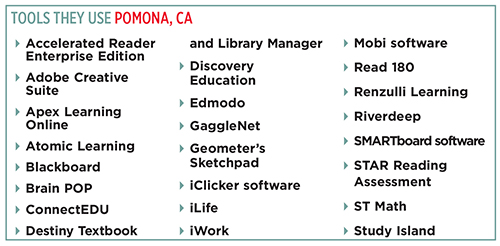
A peek at the home page of Lockhart ISD’s new workplace database.

Medina was equally concerned with helping his students develop the “soft skills” employers say are lacking in recent graduates. he applied for a grant from WIN learning (www.winlearning.com) to offer professional development for the CTE teachers to learn how to integrate WIN SoftSkills content into their classes. ROP students complete online modules to improve their work habits, teamwork, and communication. next, Medina provided the professional development for industrial technology teachers and expanded SoftSkills into the core curriculum for all high school students. “by adding these elements to our overall curriculum, we are making the classwork relevant, whether a student chooses college, work, military, or a certification training program,” says Medina. “each student begins with a career-readiness skills assessment, receives targeted instruction to build skills, and ends with a reassessment to determine learning outcomes.”
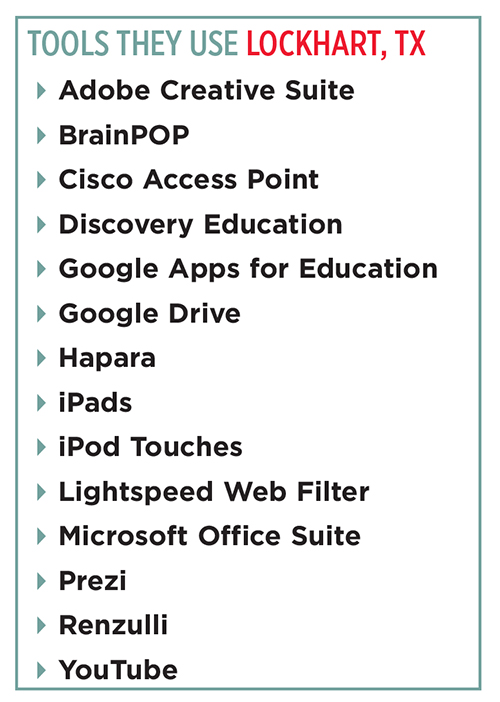
RESUME 3.0
Tools and ideas to transform education. Sign up below.
After regularly reading Fast Company and Forbes, Jose Parra says it became very apparent that high school students need to develop a safe and secure online presence to penetrate the job market. “We’re not trying to have our students develop skills that are limited to a specific industry or market,” says Parra, superintendent of Lockhart (TX) ISD. “We want to help them develop ways to make themselves marketable and attractive to any employer.” His plan is to teach students how to determine their skills, collaborate with others, market themselves, and speak knowledgeably about what they can offer to an employer.
Today, Parra is working with SureScore (www.surescore.com) to create a customized database that will link Lockhart students with local and regional businesses. Within the database, students will be able to highlight their interests, describe their workplace environment preferences, and illuminate their skills. “every student can present his or her skills to a potential employer in the same structured way. it’s more than a resume; it’s a representation of yourself.” freshmen and seniors will begin using the database this spring. the remaining students will participate in the fall. “I hope this will help our students get internships and be competitive in the marketplace right away,” says Parra.
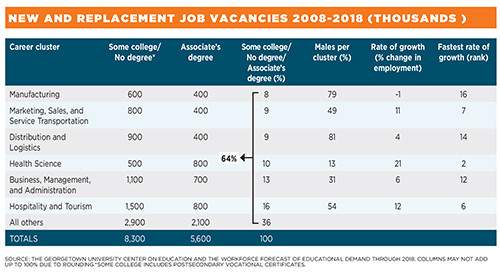
WORK@SCHOOL
This fall, nine CTE programs across West Virginia will become simulated workplaces. students will have to apply to a company and be interviewed. if the students are accepted, they will enter into an actual work environment. each company will receive a monetary value based on size and other factors. students will have to pass assessments to determine the dollar amount of value they bring to the company. Attendance, random drug testing, and other factors will determine if the company gains or loses money. the company will include these details in their annual reports.
Welding students at work in the Putnam County Technical Center in West Virginia.

The West Virginia Department of education (WVDE) has established regional technical teams made up of industry people. these teams will interview instructors and students, assess the work environment, review the curriculum, look at outcomes, and rate the program. Programs with high ratings receive a state endorsement, and students who graduate at a certain level will obtain certification. if a program gets a poor rating, the technical team will help it improve.
“Over the last three years, what I’ve heard from business and industry leaders is that kids don’t understand customer service, they don’t have a strong work ethic, and they don’t understand real-world situations or processes. some of them don’t even understand that you have to show up for work,” says Kathy D’Antoni, assistant state superintendent of schools for the WVDE. “the purpose of this initiative is to change that.”
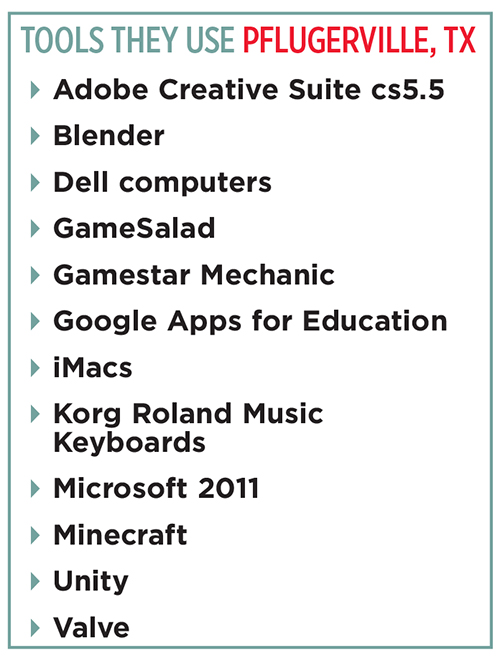
GAME ON
Thanks to funding and support from the Austin Chamber of Commerce, David Conover has been teaching video game design (chsvgd.weebly.com) at John b. Connally high school in the Pflugerville ( TX) ISD for the last three years. Conover enjoys teaching the course because it prepares his students for the workplace of today and tomorrow. “My video game learning environment is a serious Games incubator,” he says. “I am able to move away from teacher- directed, whole-group instruction to create a learner-centered workplace for a collaborative culture of students. this approach allows students to be creative and innovative.” students go on field trips, do hands-on projects, and use the internet as well as graphic and video game design software to create games. there are a lot of video game companies in the area, and Conover often invites game- industry professionals to meet the students and offer internships and jobs.
A Sarcoxie High School vocational student tacks welding support frames for a BBQ smoker.
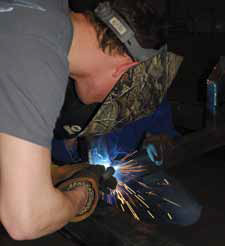
“The video game market is extremely cutthroat and dynamic. there are lots of small players in the area and close to 7,000 or 8,000 jobs,” says Drew Scheberle, senior vice president of education and talent development for the Austin Chamber of Commerce. “the chamber wants to support the innovators who will drive the next generation of innovation and student learning gain.”
AN ACCURATE ASSESSMENT
Goddard became superintendent of Sarcoxie (MO) R-ii school District, he met with local leaders to discuss how to prepare students for the workforce. Goddard wanted to find an appropriate assessment for non-college- bound seniors, since many of those students were having difficulty finding decent jobs. The answer was ACT WorkKeys (www.act.org/products/workforce-act-workkeys), a job skills assessment system that measures foundational and soft skills. With financial support from the chamber of commerce, the City Office for Workforce Development, and the business community, all juniors in the district take the Workkeys test and earn a national Career Readiness Certificate at the bronze, silver, gold, or platinum level. (silver or above signifies work-readiness. Gold or platinum indicates an individual who might have managerial or leadership potential.) students can bring the certificate to a potential employer, proving they won’t need on-the-job remediation in basic workplace skills. the city is using the program to recruit potential businesses into the area by showing that a ready-to-go workforce is available. “the assessment is helping us discover what we need to work on and do better,” says Goddard. “We want to know that every student is prepared with a plan—whether it’s to go on to higher education or to work.”
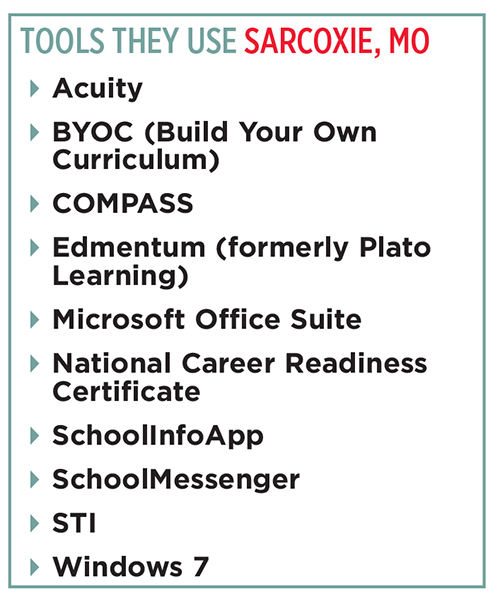
A DUAL-DEGREE PROGRAM
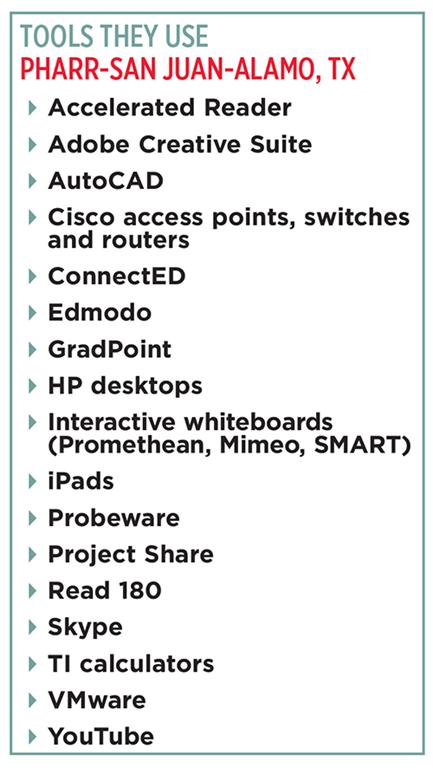
“We want to connect every high school student to a career before they leave us,” says Daniel P. king, superintendent of Pharr-san Juan-Alamo ISD (PSJA ISD) in Texas. to do so, the district partnered with south Texas College to allow students to complete industry certification or obtain an associate’s degree—for free—before graduation. The state pays for part of the degree and the college covers the rest. PSJA ISD pays for textbooks and other materials. Half of last year’s 1,900 graduates completed some college coursework and 60 left with an associate’s degree. Almost all of them went on to a four-year college. King expects 100 students to obtain an associate’s degree this year, and he wants to have 1,000 students graduate with an associate’s degree or certification by 2016.
PSJA students work towards their welding certification in a dual-enrollment class with South
Texas College.

“We need to redesign our educational system so children are ready and prepared for the high- demand careers out there instead of just handing out diplomas and leaving them to hopefully find something,” says king. “We’re importing people from other countries to take on jobs rather than preparing our own students.”
San Juanita Sanchez, the mayor of San Juan, loves what the district is doing. “Our students are graduating with the ability to hit the job market right away and have money to go to college. the potential for our community is fantastic.”
FUTURE JOBS
* In 2018, 37% of all jobs will be for workers who have either a high school diploma or an incomplete high school education with some on-the-job training. This number is down from 72% in 1973, 44% in 1992, and 41% in 2007.
* About 60% of all new and replacement jobs in the U.S. economy for high school workers between 2008 and 2018 will be in hospitality and tourism (27%); transportation, distribution, and logistics (13%); architecture and construction (11%); and manufacturing (9%).
* Earning a two-year associate’s degree, a vocational certificate, or even attending college without graduating can open the door to so-called “middle skill” jobs that typically pay better than the minimum earning threshold level of $35,000 a year.
SOURCE: "CAREER CLUSTERS: FORECASTING DEMAND FOR HIGH SCHOOL THROUGH COLLEGE JOBS 2008-2018," THE GEORGETOWN UNIVERSITY CENTER ON EDUCATION AND THE WORKFORCE (CEW.GEORGETOWN.EDU), NOVEMBER 2011
